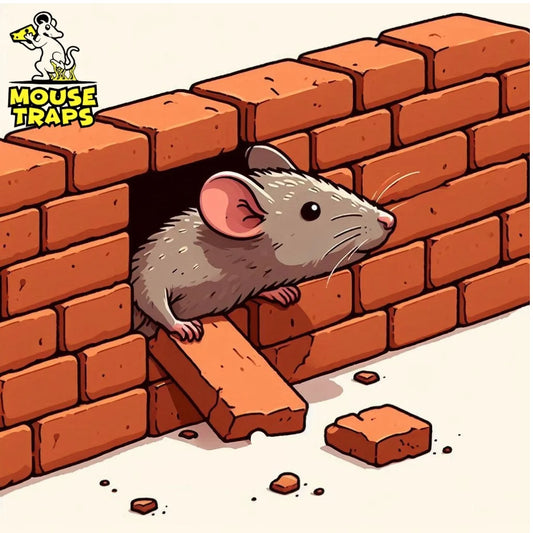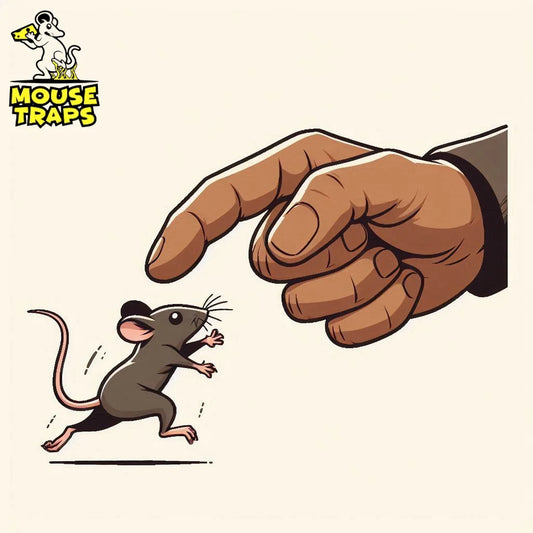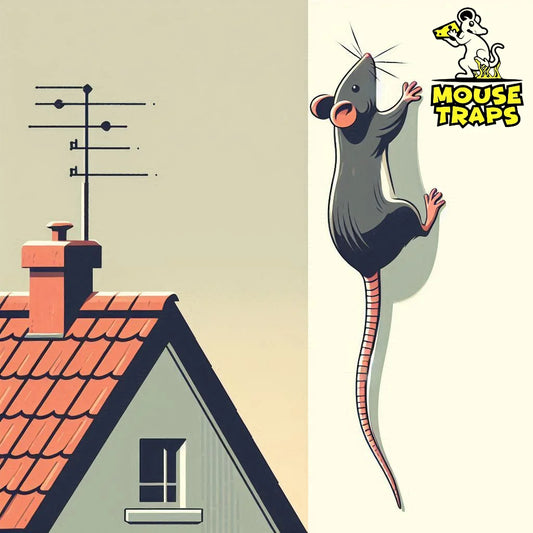Introduction:
Rats have a knack, for causing chaos, in vegetable gardens and orchards destroying crops and leaving gardeners feeling exasperated. Fear not by employing methods and leveraging mouse traps efficiently you can thwart rat induced damage and safeguard your harvest. This detailed guide will explore tactics, methods and advice to deter rats effectively guaranteeing the prosperity of your garden.
Understanding Rat Behavior:
To effectively prevent rat infestations it's important to grasp the behavior of these rodents. Rats, being animals are drawn to food, like vegetables and fruits found in gardens. Their nocturnal nature makes it difficult to catch them in the act during daylight hours. Moreover rats reproduce at a pace with one pair able to give birth to hundreds of babies within a year. Having an understanding of these behaviors is essential, for devising prevention tactics.

Identifying Signs of Rat Infestation:
To effectively tackle rat damage you need to spot signs of infestation. Check for bite marks, on fruits and veggies droppings, tunnels and traces around garden areas. Also pay attention to squeaks or rustling noises during the night. Identifying these signs early enables action to stop harm.

Choosing the Right Mouse Traps:
Selecting the appropriate mouse traps is crucial for successful rat prevention. Opt for traps specifically designed for rats, as smaller traps intended for mice may not be effective. Consider humane traps that capture rats alive for relocation, or traditional snap traps for quick elimination. Electronic traps are also available, delivering a high-voltage shock to quickly dispatch rodents.
Live Humane Mouse Traps:
These traps are designed to capture rodents without harming them. Live humane mouse traps typically consist of a small cage with a door that closes when the rodent enters, trapping it inside. They are usually baited with food to attract the rodents.

Benefits:
- Ethical: Live traps provide a humane way to capture rodents without causing them harm or suffering.
- Non-toxic: Unlike poisons or chemical repellents, live traps do not pose a risk to humans, pets, or the environment.
- Reusable: These traps can be emptied and reset multiple times, making them a cost-effective and environmentally friendly solution.
- Safe: Live traps pose no risk of injury to humans or non-target animals, making them safe to use in outdoor environments near billboards and signage.
Sticky Glue Mouse Pads Traps:
Sticky glue mouse pads traps consist of a flat surface coated with a strong adhesive. When rodents walk onto the pad, they become stuck to the adhesive and cannot escape. These traps are typically placed along pathways or entry points where rodents are likely to travel.

Benefits:
- Effective: Sticky glue traps are highly effective at capturing rodents, including rats, mice, and other small pests.
- Easy to Use: Simply place the traps in strategic locations, and they will begin capturing rodents immediately.
- Versatile: Sticky glue traps can be used indoors or outdoors and are suitable for a wide range of rodent infestation scenarios.
- No Chemicals: Unlike rodenticides or chemical repellents, sticky glue traps do not use toxic substances, making them safe for use around billboards and signage.
Strategic Trap Placement:
Effective trap placement is essential for maximizing rat capture rates. Position traps along rat runways, near food sources, and entry points to the garden. Ensure Mouse Traps are placed out of reach of children and pets, and check them regularly for captured rats to prevent odors and maintain effectiveness.
Baiting Techniques:
Baiting traps properly significantly increases their effectiveness. Common baits include peanut butter, cheese, and nuts, which rats find irresistible. Apply a small amount of bait to the trigger mechanism, ensuring it's securely attached to prevent theft by agile rats. Refresh bait regularly to maintain its attractiveness.

Monitoring and Maintenance:
Regular monitoring of Mouse Traps is essential to gauge effectiveness and identify areas of high rat activity. Check traps daily, removing any captured rats promptly to prevent attracting more rodents. Additionally, inspect garden fences and structures for potential entry points, sealing any gaps or cracks to prevent rat ingress.
Natural Deterrents:
In addition to Mouse Traps, consider implementing natural deterrents to discourage rats from entering your garden. Planting aromatic herbs like mint, lavender, and rosemary can repel rodents with their strong scents. Install ultrasonic repellers or motion-activated sprinklers to startle and deter rats from approaching.

Collaborative Pest Control:
Working together with your neighbors to put in place pest control measures collectively can improve their effectiveness. Coordinate where you place traps and how you monitor them to establish a front, against rat problems. Furthermore sharing knowledge and strategies fosters a sense of belonging and support, among individuals.
Professional Pest Control Services:
In severe infestation cases or if prevention measures prove ineffective, consider enlisting the services of professional pest control experts. Experts, in pest management possess the knowledge and tools to evaluate the severity of an infestation and apply removal techniques utilizing efficient approaches.

FAQs:
Conclusion:
By using a mix of steps positioning of traps and careful observation you can safeguard your vegetable garden or fruit trees from rat infestations effectively. From choosing the right Mouse Traps to utilizing natural deterrents, proactive steps can ensure a bountiful harvest free from rodent interference.




